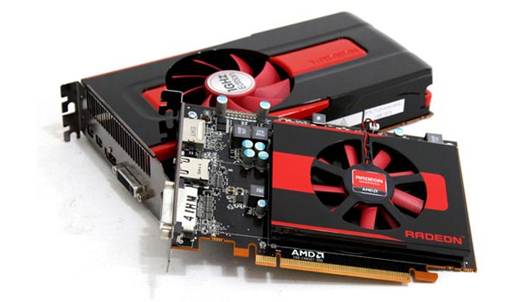SM – Streaming multiprocessor
A sub-unit inside an Nvidia GPU containing stream
processors. Also contains a polymorph engine that performs tessellation, plus
texture units and scheduling units for managing threads.
GPC – Graphics processor clusters
The unit inside an Nvidia GPU containing
streaming multiprocessors, splitting work into threads and assigning them to
individual SMs.
Texture unit
Applies textures to geometry rendered by
the stream processors.
Stream processor
The base unit of processing inside the GPU,
arranged into either SIMDs (AMD) or SMs (Nvidia). These simple processors
enable large-scale parallel processing of simple tasks – perfect for graphics.
Cu – Compute unit
The unit inside an AMD GPU, each containing
four individual SIMD Engines and four texture units, with an accompanying
scheduler and caches.
SIMD – Single instruction, multiple data
AMD’s name for a sub-unit inside an AMD CU,
containing 16 stream processors each.
ROP – Render output unit
ROPs recombine the render threads and
post-processing effects before outputting the resultant frame to your display.
TDP – Thermal design power
The maximum amount of power a GPU can
consume for its cooling system to dissipate the resultant heat.
Nvidia GeGorce GTX 650 1GB and AMD Radeon HD 7750 1GB
A false economy; $80.5 more nets double the
performance
First class:
Low power consumption small cards
Economy class: Poor value; low frame rates at 1,920 x 1,080 with maximum detail
settings
How much?
Typical street price: $144.5 (GTX 650)
Typical street price: $128.5 (Radeon HD
7750)
Manufacturer: www.nvidia.com, www.amd.com
With price tags of $128.5 - $144.5, the GTX
650 1GB and HD 7750 1GB are tempting for those on tight budgets, but spending a
little more gets you a substantial speed increase that makes these budget cards
a poor choice.
The GTX 650 1GB uses a scaled-down Kepler
based GPU the GK107. It comprises a single GPC with two SMs for a total of 384
stream processors and 32 texture units, with the GPU running at 1,058MHz.
There’s also just a pair of 64-bit memory controllers, resulting in a 128-bit
memory interface, with 1GB of GDDR5 running at 1.25GHz (5GHz effective),
producing a peak memory bandwidth of 80GB/sec.

Nvidia
GeGorce GTX 650 1GB
The HD 7750 is similarly lightly equipped.
Eight CUs means a total of 32 SIMDs, 512 stream processors and 32 texture
units, all running at 800MHz. A 128-bit memory interface is matched with 1GB of
GDDR5 running at 1,125MHz (4.5GHz effective) for a bandwidth of 72GB/sec. The
64W GTX 650 1GB requires a 6-pin PCI-E power connector, while the 55W HD 7750
1GB only needs the PCI-E slot.

AMD
Radeon HD 7750 1GB
Of course, you can’t expect silky-smooth
frame rates for $144.5, but the drop-off from cards 50 per cent more expensive
is steep. In the Unigine benchmark, the GTX 650 1GB is marginally faster, with
a score of 582 compared to the HD 7750 1GB’s 536, but in real-world games,
there’s little difference between the two. In Skyrim at 1,920 x 1,080 with
8xAA, both cards managed a playable frame rate of 27fps, although neither card
achieved playable frame rates in Crysis 2 or The Witcher 2.
The only game that demonstrated any major
difference was BF3, where the GTX 650 1GB’s minimum of 20fps at 1,920 x 1,080
was 15 per cent faster than the HD 7750 1GB’s 17fps. Regardless, neither card
can play most games at their best at 1,920 x 1,080, so you’ll need to lower the
settings, which isn’t what you want from a new GPU.
Conclusion
While their low prices might be tempting,
these cards are underpowered. The Radeon HD 7850 2GB offers a genuine doubling
in minimum frame rates for $80.5 more, making it a far more worthwhile and
future proof purchase.
Score: Nvidia GTX 650
·
1920 speed: 6/20
·
2560 speed: 5/20
·
5760 speed: 0/5
·
Value: 39/55
Scores: AMD HD 7750
·
1920 speed: 5/20
·
2560 speed: 4/20
·
5760 speed: 0/5
·
Value: 40/55